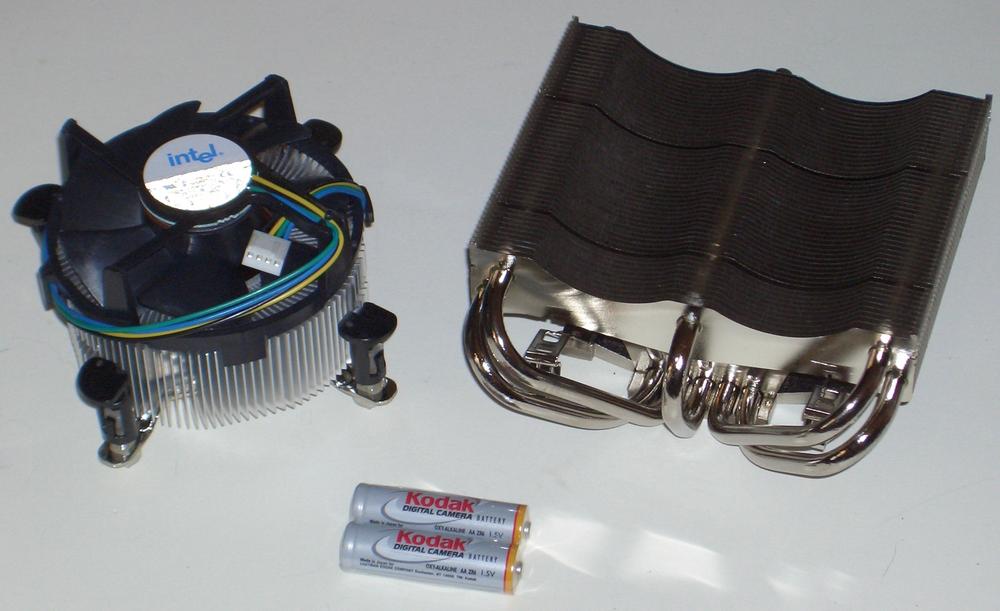CPU Coolers
Modern CPUs consume a lot of power—as much as 130W. That power ends up as waste heat. In effect, a modern system has the equivalent of a 50W to 130W incandescent lightbulb burning constantly inside the case. That analogy understates the problem—a lightbulb dissipates its heat from the relatively large surface of the bulb. A processor must dissipate the same amount of heat over the much smaller surface area of the processor die, typically about 0.25 square inch. Without an effective heatsink to draw away this heat, the processor might literally burn itself to a crisp almost instantly.
Nearly all systems deal with this heat problem by placing a massive metal heatsink in close contact with the processor die (or integrated heat spreader) and using a small fan to draw or push air through the heat-sink fins. This device is called a heat-sink/fan ( HSF) or CPU cooler. As the power consumption of processors has continued growing, so too has the size and mass of the heatsinks they use. Even the stock coolers packaged with retail-boxed processors nowadays are often quite large and heavy. For example, Figure 5-6 shows a stock Intel Pentium 4 CPU cooler on the left and a Thermalright XP-120 aftermarket CPU cooler on the right, with a pair of AA batteries shown for scale.

Figure 5-6. Intel stock CPU cooler (left) and Thermalright XP-120 CPU cooler, with AA batteries shown for scale ...
Get Repairing and Upgrading Your PC now with the O’Reilly learning platform.
O’Reilly members experience books, live events, courses curated by job role, and more from O’Reilly and nearly 200 top publishers.

